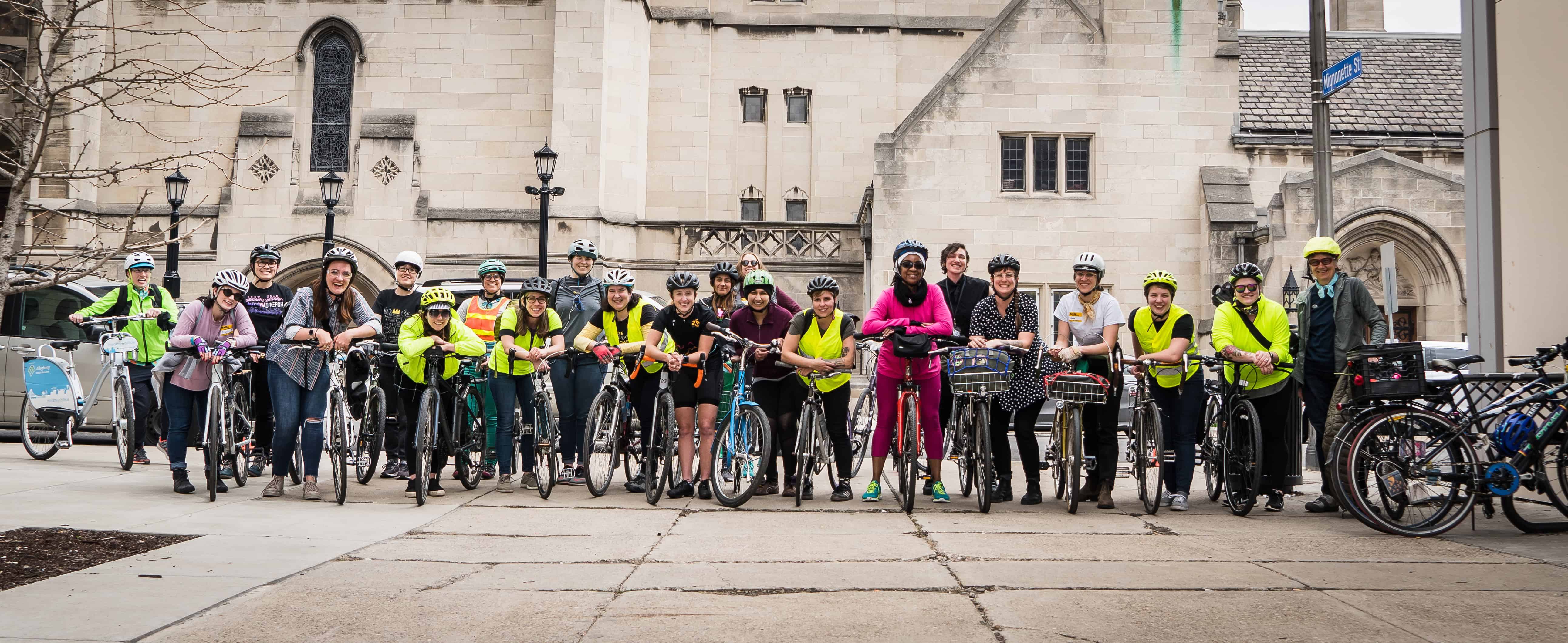
The Feminist Power of Cycling
What if we told you the history of bicycling is an empowering story of rebellious women and their long battle for equal rights? Believe it or not, the bicycle played an important role in women’s empowerment.
When thinking about bicycling, many associate the activity and sport with men. Like other aspects of history, the story has often been told through the perspective of white males, which is why author and avid cyclist Hannah Ross felt it was important to retell the story with women at the forefront.
In her book Revelations: How Women Changed The World On Two Wheels, Ross talks about the empowering history of women and cycling, why representation matters, and how we can get more women on bikes.

The Empowering History of Bicycles and Women
Women entered the bicycling world around the 1880s when the Rover Saftey Bicycle came on the market. The new design, which closely resembles modern-day bikes, was safer and easier to ride, thus attracting a new demographic, women.
Bicycles offered new freedoms for women that they never had before. They no longer needed to rely on men for transportation, and with this new mobility came a new sense of empowerment.
Women of the suffrage movement used bikes to travel to new places and gather with others independently without chaperones. Bicycles represented women’s yearnings for greater freedoms and symbolized wanting control over their lives.
Women’s rights activist Susan B. Anthony described it best:
“I think it [bicycling] has done more to emancipate women than anything else in the world. It gives women a feeling of freedom and self-reliance. I stand and rejoice every time I see a woman ride by on a wheel — the picture of free, untrammeled womanhood.”
For men, bicycling was a fun pastime activity, but for women, it was about expanding worlds and gaining independence.
How Cities Can Get More Women on Bikes
You might be thinking: “If women, empowerment, and bikes are so intertwined, then why do we still see fewer women riding them?” The answer to that question can be answered by looking at history. The reason women started biking in the first place was due to safer bikes being available. Like bikes, if our roads are designed with bike safety in mind, we’ll start to see more and more people on bikes.
Why Representation in Cycling Matters
Cycling has been very slow to include women, and if it’s to attract a wider audience, then representation needs to be at the forefront.
Though companies have made more efforts to get more women on bikes, they still make up less than 25% of riders, and in the professional sports world, that number is even lower. Women’s cycling wasn’t added to the Olympics until 1984, and this July will be the first time women will be allowed to compete in the Tour de France.
Even less represented are people of color, gender-variant individuals, and other marginalized groups. For this reason, it’s important to have groups and programs that create more representation in bicycling and offer spaces for people who have historically been excluded from coming together.

Learn more about BikePGH’s Women and Non-Binary Program
Women and gender-variant individuals in Pittsburgh can get involved with the cycling community by joining BikePGH’s Women and Non-Binary Program. The WMNBikePGH Program encourages conversation and provides spaces to come together over biking, advocacy, and related topics while increasing the representation of people who have historically marginalized gender identities.
Learn about the history of women and bikes, the importance of representation, and more in Hannah Ross’ book Revelations: How Women Changed The World On Two Wheels.
